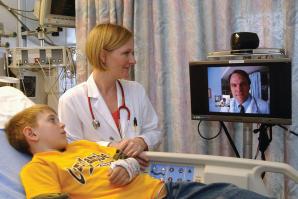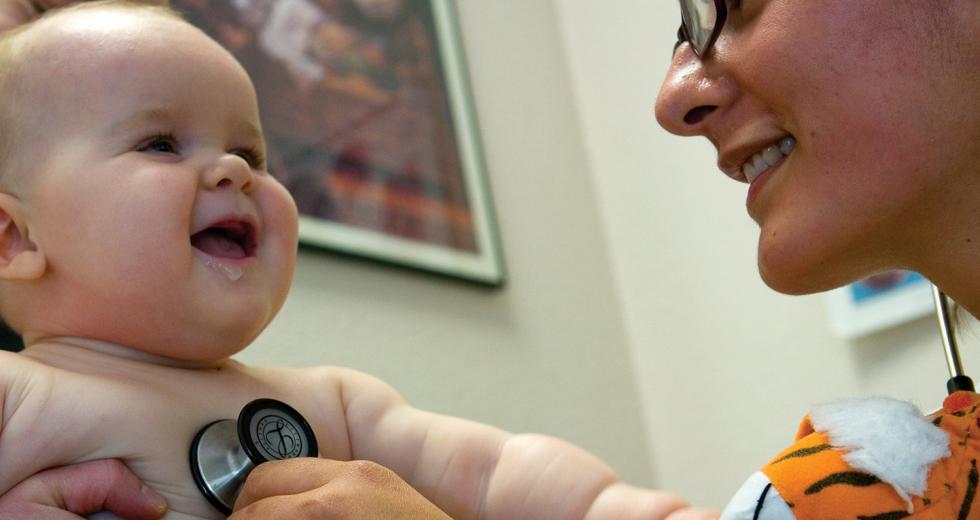Millions of dollars could soon be available for rural health care providers across the nation. Rural clinics, hospitals and providers in the Capital Region are already queuing up for their share of the funding pie, but the demands behind the cash could make the financial assistance hard won.
As part of the American Recovery and Reinvestment Act of 2009, federal money is pouring into rural health services in an effort to introduce or improve shared-information technology systems, work force development, transportation and access, and the promotion of wellness and community health.
“The big challenge is that rural health care is so tattered. The challenges are extensive,” says Steve Barrow, policy director for the California State Rural Health Association.
According to the Centers for Disease Control, there are 935 residents per doctor in rural California, compared to 460 in urban areas of the state. Almost half the state’s rural population lives in health professional shortage areas.
“These underserved areas are a looming problem,” says Dr. Don Hilty, a professor of clinical psychiatry at UC Davis. “We have a group of rural physicians who have done great things in this area, but we are going to lose a generation of them to retirement. We are going to be in dire straights in the next 10 years.”
The shortage of providers stems from the fact that rural health care providers can’t offer the kind of salaries available in urban areas, says Désirée Rose, executive director of the California State Rural Health Association.
The math doesn’t work considering that the average medical student graduates more than $150,000 in debt, according to the American Medical Association.
There are loan forgiveness programs through the National Health Service Corps for medical students who agree to serve up to four years in a shortage area. However, there are only a few dozen grants available per state, so in the past, California hasn’t enough loans available to meet demand. The American Recovery Act has increased the National Health Service Corps loan forgiveness budget by about $200 million, allowing for more grants to be funded in the future.
“Also, it’s a matter of lifestyle,” Rose says. “If you are a doctor with a spouse who has career aspirations, the opportunities in rural areas aren’t as abundant.”
Hilty is the director of the UC Davis Rural-PRIME program, a medical school offshoot that accepts a dozen students a year to focus on rural-specific issues such as telemedicine and public health. Students in the program also serve four to six months in a rural care setting such as the Tahoe Forest Hospital in Truckee or Sutter Amador Hospital in Jackson.
If the financial stars align, a number of Davis’ Rural-PRIME students will be graduating from the three-year-old program and starting work at rural hospitals and clinics across the region by the time federal stimulus passes through the red tape and into the hands of providers.
That is if local providers can even get their names in the hat.
“Right now a lot of [providers] are like deer in the headlights because there are so many moving parts,” Barrow says. “Many don’t even have the resources to be able to apply for these grants. Sutter and Butte [counties] are always behind, for political reasons and infrastructure. Amador has nice clinics, but they struggle with transportation. Placer, Nevada and El Dorado [counties] are more sophisticated and will have more access to funding.”
Of the four funding areas, the greatest attention is focused on health information technology. California is eligible for $38.8 million.
“There are problems with access to services [in rural areas], especially from specialists. There are options here to rapidly expand broadband and tele-health access and capabilities across the state,” says Jonah Frohlich, deputy secretary of health information technology for the state Department of Health and Human Services. “Then you can connect rural and urban providers and academic institutions to deliver services. You can also deliver things like electronic health records over the Web.”
But potential might not be the right word, as there are stern caveats.
Rural providers that qualify for funding will have to prove “meaningful use” of electronic medical records by 2015 or be penalized with decreased Medicare reimbursements, Barrow says. Many rural providers in the region currently lack the necessary staff, equipment and funding to make that happen. But for those who reach certain goals by 2011, there are financial incentives, including Medicare reimbursement increases.
Still, even for the providers who are able to bolster their electronic medical records, barriers to sophisticated, integrated use exist. Plenty of rural communities in California are still trying to obtain broadband access, the key ingredient for information exchange.
Much progress in that arena can be attributed to groups such as the California Telehealth Network, which was created by a coalition of health care, technology, government and other stakeholders that drafted a proposal to the Federal Communications Commission in 2007. Under the FCC’s Rural Health Care Pilot Program, the federal government will provide California with up to $22.1 million over three years to connect more than 300 California health care providers to a state and nationwide broadband network.
Piggybacked on that move, the nonprofit California Emerging Technology Fund was established pursuant to requirements from the California Public Utilities Commission in approving the mergers of SBC with AT&T and Verizon with MCI. The merged companies will contribute $60 million over five years to advance broadband across the state.
Recommended For You

Beam Me Up
Connecting urban specialists to rural patients
An infant in Redding is turning blue, slipping away with a failing heart and lungs until a specialist in Sacramento steps in and saves the baby’s life, guiding a team of nurses via a video link.

In Sickness and in Health
Medical insurance is available, but are the doctors?
Under the federal Affordable Care Act, all but a small number of Americans soon will be required to have health insurance. But having insurance is one thing; getting the medical care it is intended to cover may be entirely another.



